Necromancer - Spiritual Powers - Tier 5
Like the Mathematician, the Necromancer is a "scholarly" character class that has poor combat skills and low hit point accumulation. However, while the Mathematician uses abstract mathematics and physics to reveal the secrets of the Universe, the Necromancer seeks to do so through biology and arcane lore. Necromancers have seven Tiers of spells. While it is theoretically possible for a Necromancer to be of "good" alignment, many either start off evil or are seduced by the darkness over the course of their careers.
Quick Links: Tier 1 | Tier 2 | Tier 3 | Tier 4 | Tier 5 | Tier 6 | Tier 7
 Blood Tornado
Blood Tornado
Tier: 5
Casting Time: 7 segments
Area of Effect: 1 cyclone: 10' base, 20' height
Range: 20//
Duration: 1 round per level
Arcane Focus: A test tube full of blood
B-M-S Cost: 4.0
Classification: Combat
The Arcane Focus is pretty easy to acquire -- it is simply a vial of blood from a sentient humanoid. The spell's duration is doubled if the blood comes from the Necromancer's own body (costing one hit point). As a tornado emerges from the test tube, the focus is expended in the casting of this spell.
The effects of the Blood Tornado are three-fold: 1.) Foes caught within the tornado must Save versus Area Effect or be temporarily blinded for the duration of the spell (due to being coated in wash of steaming blood); 2.) Foes must also make an Endurance roll to avoid being pushed off-balance and knocked over (thus losing their action); 3.) The demoralizing effect of Blood Tornado is such that foes must make a successful Panic check or beat a fast retreat (even if blinded) for the duration of the spell.
For living foes with open wounds, there also exists the possibility of contracting a short-term fever disease. If the foe in question fails a Save versus Poison, he/she will contract a fever disease that lasts 1d4+1 days and saps 1 point of Constitution per day of affliction. As with other non-fatal diseases, lost attributes recover at the rate of one point per day of rest.
Of course, not all creature types are vulnerable to all three effects. Constructs can be blinded but they are not easily knocked over (+4), nor can they be easily demoralized (immune). Undead can be both blinded and knocked over, but not demoralized.
If used against a selection of foes consisting solely of non-sentient zombie-based Undead, the creatures can actually be goaded into a blood frenzy once coated in blood. If a group Save versus Area Effect fails (the Game Master rolls only once for the whole mob of Undead), the creatures will attack each other instead of the Necromancer and his/her allies. This effect will not manifest in a group of foes of mixed creature types (such as an Elven Priest controlling a dozen Zombies).
The Necromancer can command the Blood Tornado to move at a rate of 5// per round. The Blood Tornado does not have to remain in line of sight of the Necromancer. If it goes beyond visual range, the Necromancer can issue commands like "continue north ten feet" or "Return to my position". The Necromancer and his/her allies are obviously immune to the effect.
The blood tornado becomes more powerful as the Necromancer ascends in level.
- Levels 1 to 4: The maximum range is 20// and movement is 5//.
- Levels 5 to 9: The maximum range is 24// and movement is 6//.
- Levels 10 to 14: The maximum range is 28// and movement is 7//.
- Levels 15 to 19: The maximum range is 32// and movement is 8//.
- Levels 20 and higher: The maximum range is 36// and movement is 9//.
Changes from the printed (book) version: This is a new spell.
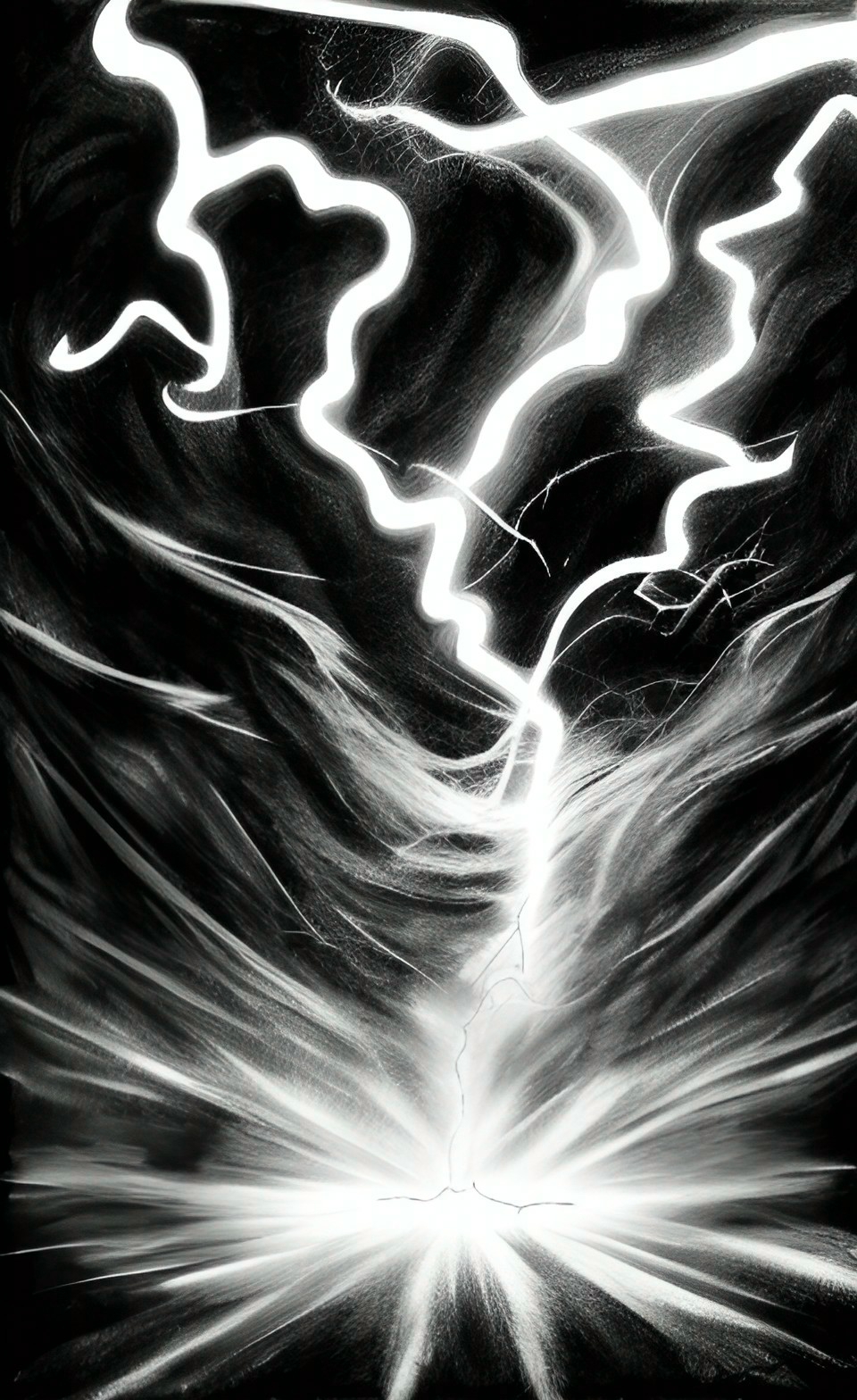 Death Bolt
Death Bolt
Tier: 5
Casting Time: 1 Round
Area of Effect: 1 person or object
Range: 10// line of sight
Duration: 1 round per level
Arcane Focus: A wand made of finger bones
B-M-S Cost: 3.0
Classification: Combat
The Arcane Focus is a wand that is at least partially comprised of finger bones. The bones can be glued together so that the wand is made only of bone, or the bones can be affixed to a wand made from other materials. Given the gun-like effect of this spell, the damage is enhanced if the bones came from a dead Gunslinger, Investigator, or Speaker For the Dead. The focus is not expended in the casting of this spell.
This powerful spell allows the Necromancer to shoot dark bolts of life-draining energy at foes within range and line of sight. The Necromancer uses his/her Missile BAtch for targeting. The bolt has the appearance of a pitch-black musket ball and has the same speed as a handgun bullet when fired. The Necromancer can fire one such round per level. If the Necromancer misses his/her target, the Game Master can optionally attempt to determine what the errant bold does hit (if anything). The damage depends on the type of target and the quality of the Arcane Focus.
| Target Creature | Standard Focus | Enhanced Focus |
| Constructs | 6d6 | 6d10 |
| Living Beings | 8d6 + 1d6 Death Magic | 8d10 + 1d10 Death Magic + 1d10 Cold |
| Undead | 10d6 + lose turn | 12d10 + lose turn |
For secondary effects, the successful appropriate saves convert the enhanced damage into ordinary damage. Sentient Undead (only) can attempt a Save versus Magical Weapon to avoid being stunned for a round.
Special warning for Undead Necromancers: This spell can be cast normally. However, the caster will need to make a Save vs Magical Weapon in order to avoid 1d6 damage from the blowback.
Of course, this spell does yield additional damage as the Necromancer increases in level:
- Levels 1 to 4: Standard damage.
- Levels 5 to 9: Additional 4 points of damage.
- Levels 10 to 14: Additional 8 points of damage.
- Levels 15 to 19: Additional 12 points of damage.
- Levels 20 or higher: Additional 16 points of damage.
Changes from the printed (book) version: This damage is scaled to the type of target.
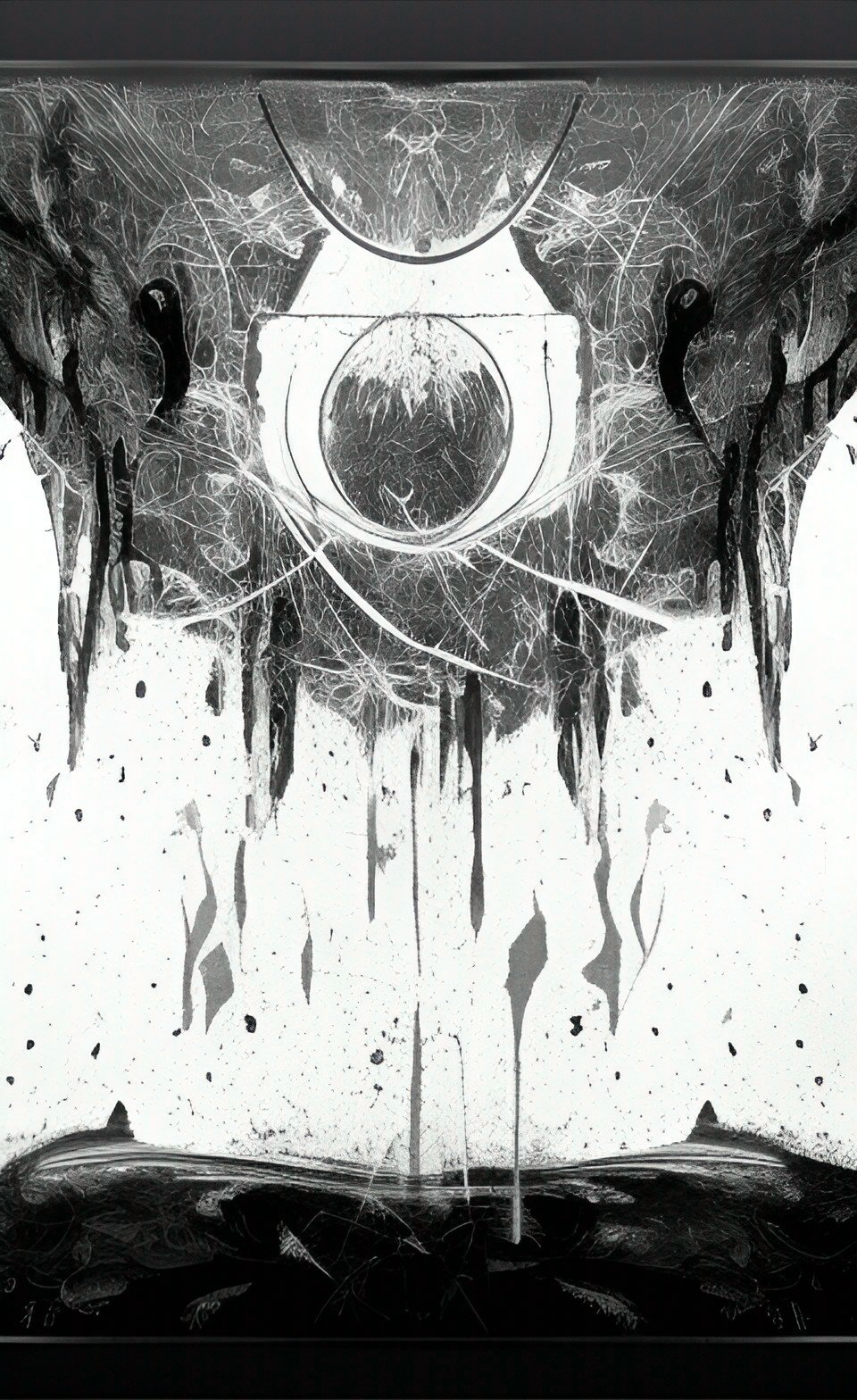 Dire Glyph
Dire Glyph
Tier: 5
Casting Time: 1 Round
Area of Effect: 1 object, door, window, etc.
Range: Touch
Duration: Until triggered, cancelled, or dispelled
Arcane Focus: A fountain pen in which the ink is blood
B-M-S Cost: 2.0
Classification: Protection or Curses
The Arcane Focus for this spell is a fountain pen in which the ink reservoir has been filled with blood. The Glyph inflicts additional damage if the pen is refilled with the Necromancer's own blood (1 hit point's worth that will heal naturally over time). The pen itself must be a high-quality instrument created by a craftsman with at least one rank in Artistic Ability. The pen must have a retail value of no less than 20 copper pieces. The pen is reusable, but the blood is not. Note: Blood would ordinarily coagulate when stored in a fountain pen. However, part of the magic is that the blood remains liquid and its viscosity changes to that of liquid ink.
The essential purpose of Dire Glyph is to boobytrap an object, door, window, floor tile, safe, vault, coffin, or any other object that the Necromancer selects. Awakened/Living Constructs cannot be selected as "objects" although ordinary (non-sentient) Constructs can. To cast this spell, the Necromancer must draw a series of arcane symbols onto the protected object using the blood pen. Once the blood dries, the symbols fade to almost (but not quite) invisibility. An Investigator (and subclass) with trap-detecting capabilities might notice that the protected object is boobytrapped. Likewise, an Investigator (and subclass) might be able to undo the Glyph if (and only if) the character also has at least one rank in Occult Knowledge.
The Glyphs are triggered by touch. Should someone other than the Necromancer touch the protected object, the Glyph explodes and inflicts damage based on target type. A successful Save vs Magical Weapon will halve the ordinary damage whilst a successful Save vs Death Magic will convert death magic damage into ordinary damage.
| Type of Target | Standard Focus | Enhanced Focus |
| Constructs | 4d10 damage + suspended for 1d4 rounds | 4d12 damage + suspended for 1d8 rounds |
| Living Beings | 6d10 damage + 1d10 death magic | 6d12 damage + 1d12 death magic |
| Undead | 8d10 damage + stunned for 1d4 rounds | 8d12 damage + stunned for 1d8 rounds |
The Necromancer can cancel the Glyph at any time. Moreover, the Glyph can be gotten rid of via a Dispel Magic (or similar spell) or a Remove Curse (or similar spell). It's also worth noting that any character that is protected by the Necromancer with Spiritual Marker will be considered to be the Necromancer for the purposes of triggering the Glyph.
Of course, this spell does yield additional damage as the Necromancer increases in level:
- Levels 1 to 4: Standard damage.
- Levels 5 to 9: Additional 4 points of damage.
- Levels 10 to 14: Additional 8 points of damage.
- Levels 15 to 19: Additional 12 points of damage.
- Levels 20 or higher: Additional 16 points of damage.
Changes from the printed (book) version: The spell has been renamed (formerly Symbol of Slaying); the damage now scales to the creature type.
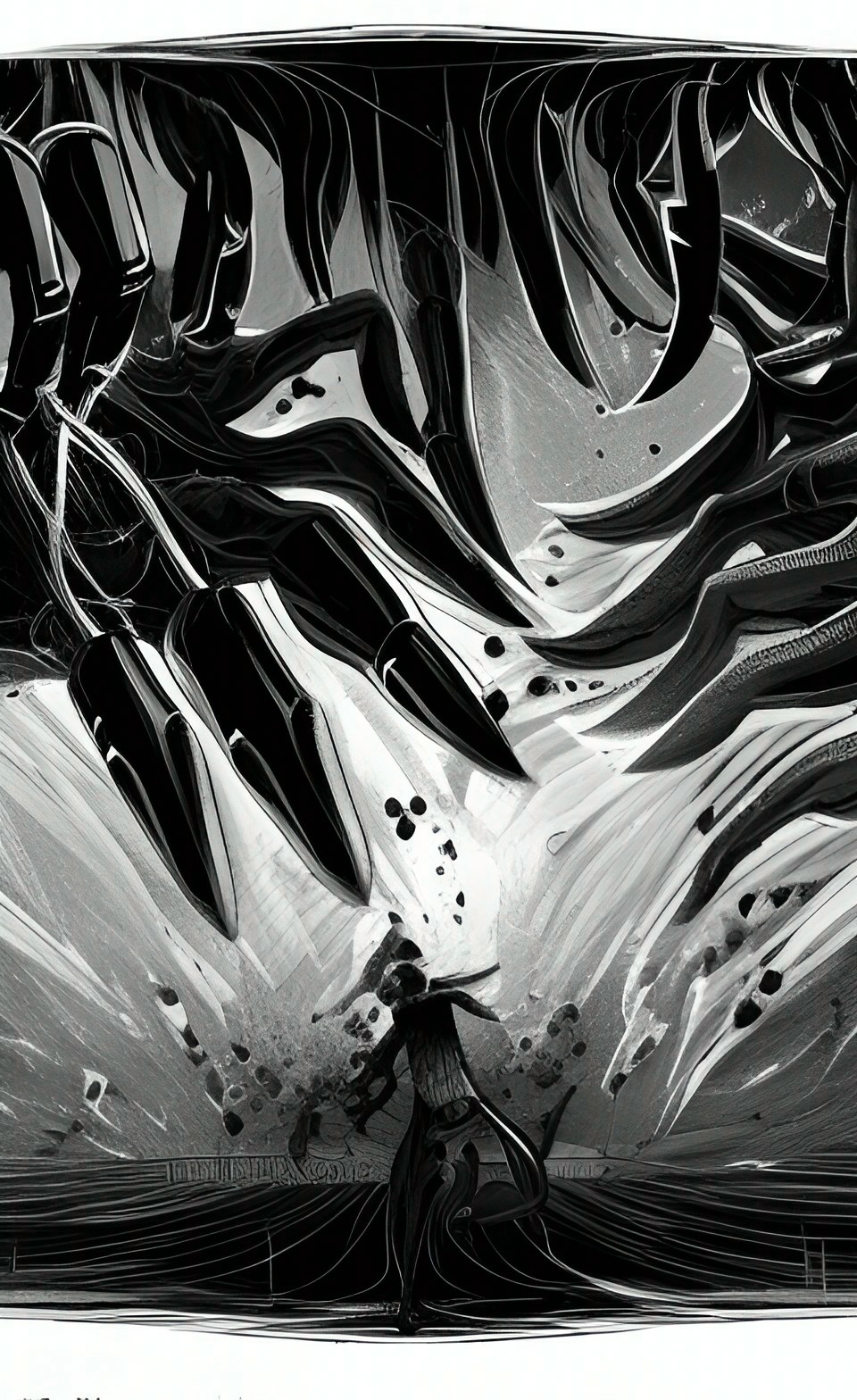 Impose Curse
Impose Curse
Tier: 5
Casting Time: Special
Area of Effect: 1 person or object
Range: 10// line of sight
Duration: Special (usually until triggered or dispelled)
Arcane Focus: A strand of hair from the target
B-M-S Cost: Special
Classification: Combat, Benedictions (reversed)
The Arcane Focus for this spell is a strand of hair obtained from the target of this spell. If it is the Necromancer who managed to pluck it directly from the target (as opposed to the Necromancer simply stealing the target's comb or bribing the target's barber), the BMS cost of the spell is halved. The focus is expended in the casting of this spell.
Like Animate Dead" and Theoretical Engine, the Impose Curse requires the participation of (and approval of) the Game Master. Curses should be unique and darkly poetic. Any clod can say "I curse you with -4 to your Save versus Death Magic", but it takes more creativity to come up with "Wherever you go, the guy behind the counter will think you've already been helped, the waitress will always forget to refill your coffee, and people will always call you by the wrong name." Sure, the latter doesn't impose combat penalties, but which of the two effects seems more like a curse?
Ultimately, the Game Master must approve the curse formulated by the Player and then determines how long the curse takes to cast as well as how much BMS is consumes. In any event, casting a curse should always foster an interesting role-playing experience instead of merely penalizing a foes' stats.
When crafting a curse, it's generally good to formulate a curse that fits the target. For example, the Necromancer can curse a back-stabbing former-friend with being suddenly careless with knives. The effect could be that the target loses a hit point due to clumsiness every time he/she handles a blade. Or perhaps the Necromancer could curse a dishonest Cavalier with a persistent effect on his armor. For example, it could manifest the words "liar" when the Cavalier tells a lie. Or perhaps the armor tarnishes rapidly and the Cavalier cannot get it to shine no matter how much effort is expended.
Curses cannot be inherently lethal. For example, a curse could result in the target only being able to breathe underwater -- but only if the target is already near a lake, river, sea, or ocean. A curse could make the target dangerously allergic to sunlight -- but not if the target is already outdoors in broad daylight with no nearby shelter.
Curses should be very inconvenient. Curses should be humiliating. Curses should have effects that manifest often enough that the target won't forget who imposed the curse and why. Finally, curses should have some way for the target to break the curse through a positive action. For instance, the back-stabbing friend could make a public apology to the Necromancer (and mean it). The lying Cavalier could complete a dangerous quest that furthers the cause of truth (like fighting spectral entities in a haunted museum in order to bring rare books back to the local university).
A Curse can also be removed by the Necromancer who cast the spell. Likewise, a Remove Curse (or equivalent spell) has a possibility of removing the curses imposed by others. In the latter example, there is usually a roll required on the Universal Matrix that may have bonuses or penalties.
Changes from the printed (book) version: This is a new spell.
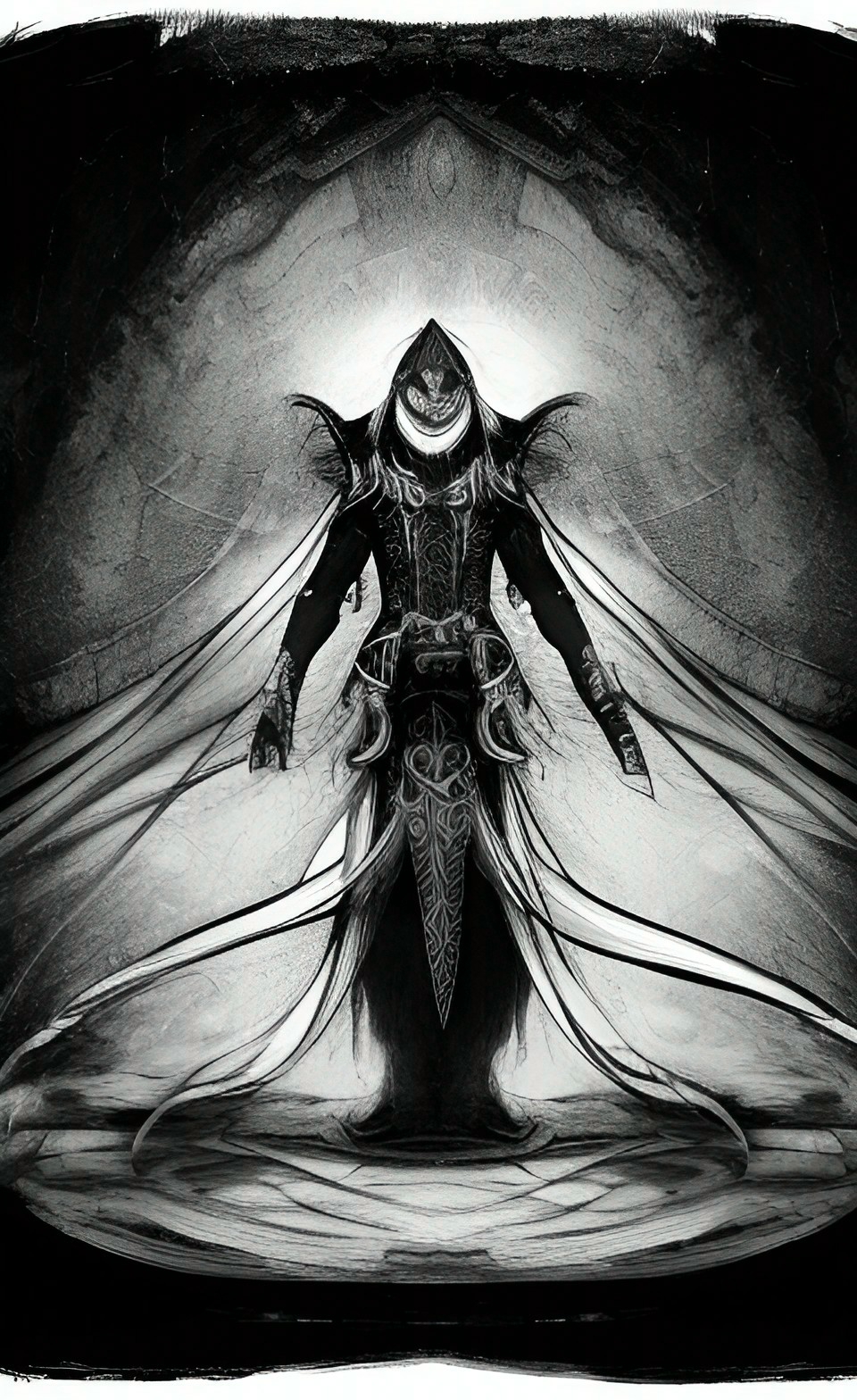 Improved Spirit Armor
Improved Spirit Armor
Tier: 4
Casting Time: 2 segments
Area of Effect: The Necromancer
Range: Internal to the Necromancer
Duration: 1 turn per level
Arcane Focus: A holy symbol scavenged from the dead
B-M-S Cost: 3.0
Classification: Defense
The Arcane Focus is a holy symbol scavenged from a corpse. The focus has enhanced properties if the holy symbol is taken from a dead Protector, Gunslinger, or Speaker For the Dead. The focus is not expended in the casting of this spell. This is same focus as the one used in Spirit Armor (Tier 4) and thus the Necromancer only needs one of these to cast both spells.
This spell is a beefed-up version of Spirit Armor. Many high-level Necromancers rely on this spell due to their notoriously weak combat prowess and a low reserve of hit points, this spell does serve to even the odds of survival by deflecting a certain amount of damage. The Spirit Armor spell is noted by a faint, shadowy aura around the Necromancer's body when the power is active (it does, however, appear darker and more substantial than the Tier 4 version of this spell). Depending on the type of focus (standard or enhanced) and the type of damage inflicted, the Improved Spirit Armor grants the following protections:
| Type of Threat | Standard Focus | Enhanced Focus |
| Physical Injury | 8 HP deflection per blow | 12 HP deflection per blow |
| Death Magic | +3 to saves | +6 to saves |
| Poison | +2 to saves | +4 to saves |
| Empathic attack | +30% resistance | +60% resistance |
| Energy drain | 20% of attack failure | 40% of attack failure |
| Disease Resistance | +20% resistance | +40% resistance |
Changes from the printed (book) version: The spell absorbs less physical damage but now also has a chance to deflect various other types of attack.
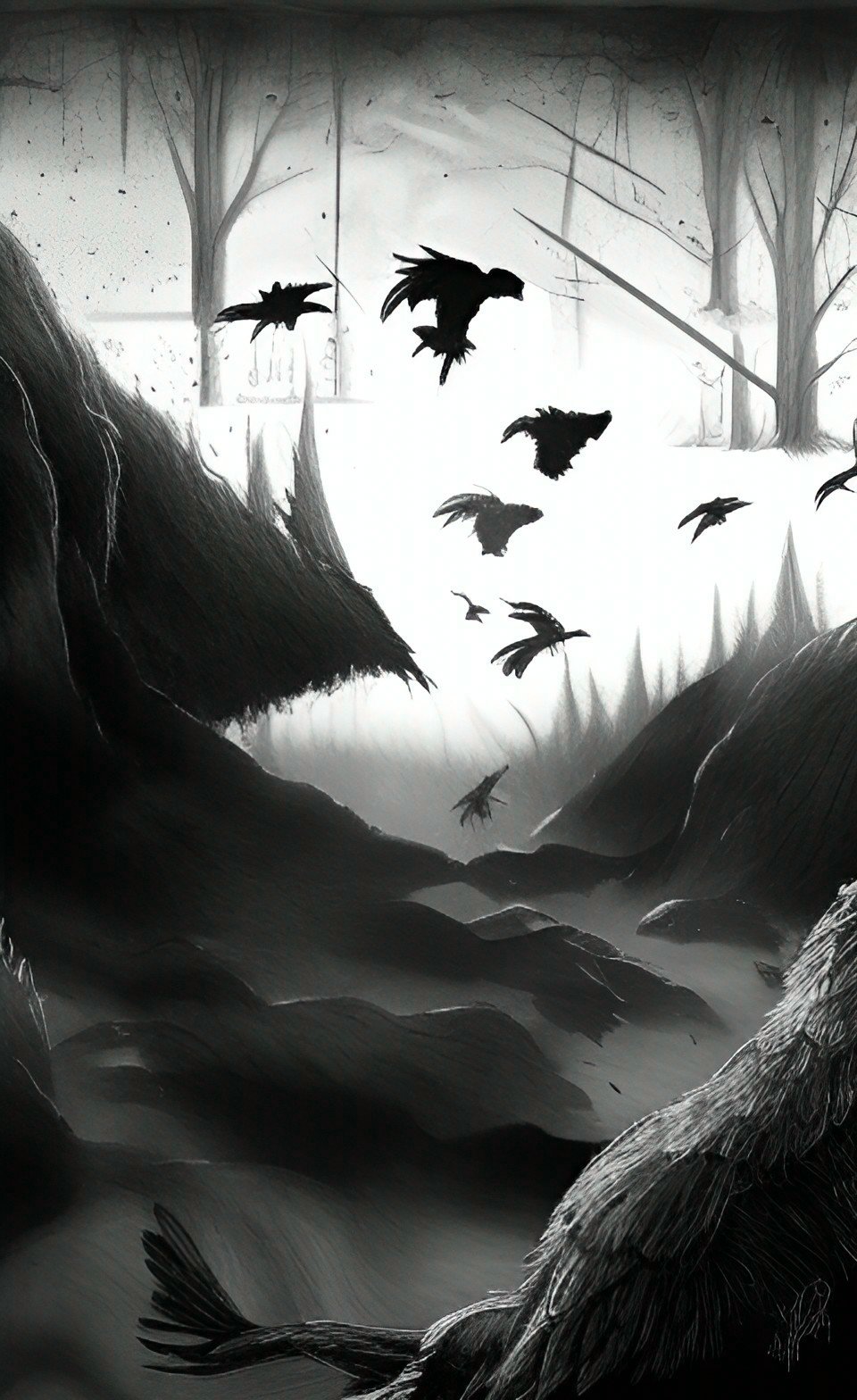 Murder of Crows
Murder of Crows
Tier: 5
Casting Time: 5 segments
Area of Effect: 1 person per level
Range: 2// radius, centered on the Necromancer
Duration: 1 turn per level
Arcane Focus: Crow Feathers
B-M-S Cost: 5.0
Classification: Conversion
The Arcane Focus for this spell is a crow feather (and one feather is needed for each person affected). The BMS requirement is halved if the crow in question has ever feasted upon the dead flesh of a sentient humanoid. Furthermore, the duration of the spell is doubled if the crow had not only fed upon humanoid flesh, but also began feasting while the subject was still alive (presumably in the process of dying). The feathers ignite and turn to ash when the spell is cast, and thus the focus is expended in the casting of this spell.
This spell is essentially an enhanced version of Raven Wings. Rather than merely transforming the Necromancer into a bird (and thus gaining improved vision and the ability to fly), this spell transforms the Necromancer and his/her allies into crows. As with other shape-change spells, the characters' primary attributes, hit points, spirit points, and BAtCh is unaffected. However, the characters gain the ability to fly, improved eyesight, and attack methods of their new form (presumably talon and beak attacks). Additionally, clothing and immediate possessions are bound into the shape change and are inaccessible while the spell is in effect. A cluster of crows is called a "murder of crows" in the same way a cluster of geese is a "gaggle of geese".
The number of allies transformed increases as the Necromancer increases in level.
- Levels 1 to 4: Up to 5 allies within 2//.
- Levels 5 to 9: Up to 10 allies within 3//.
- Levels 10 to 14: Up to 15 allies within 4//.
- Levels 15 to 19: Up to 20 allies within 5//.
- Levels 20 and higher: Up to 25 allies within 6//.
Changes from the printed (book) version: This is a new spell.
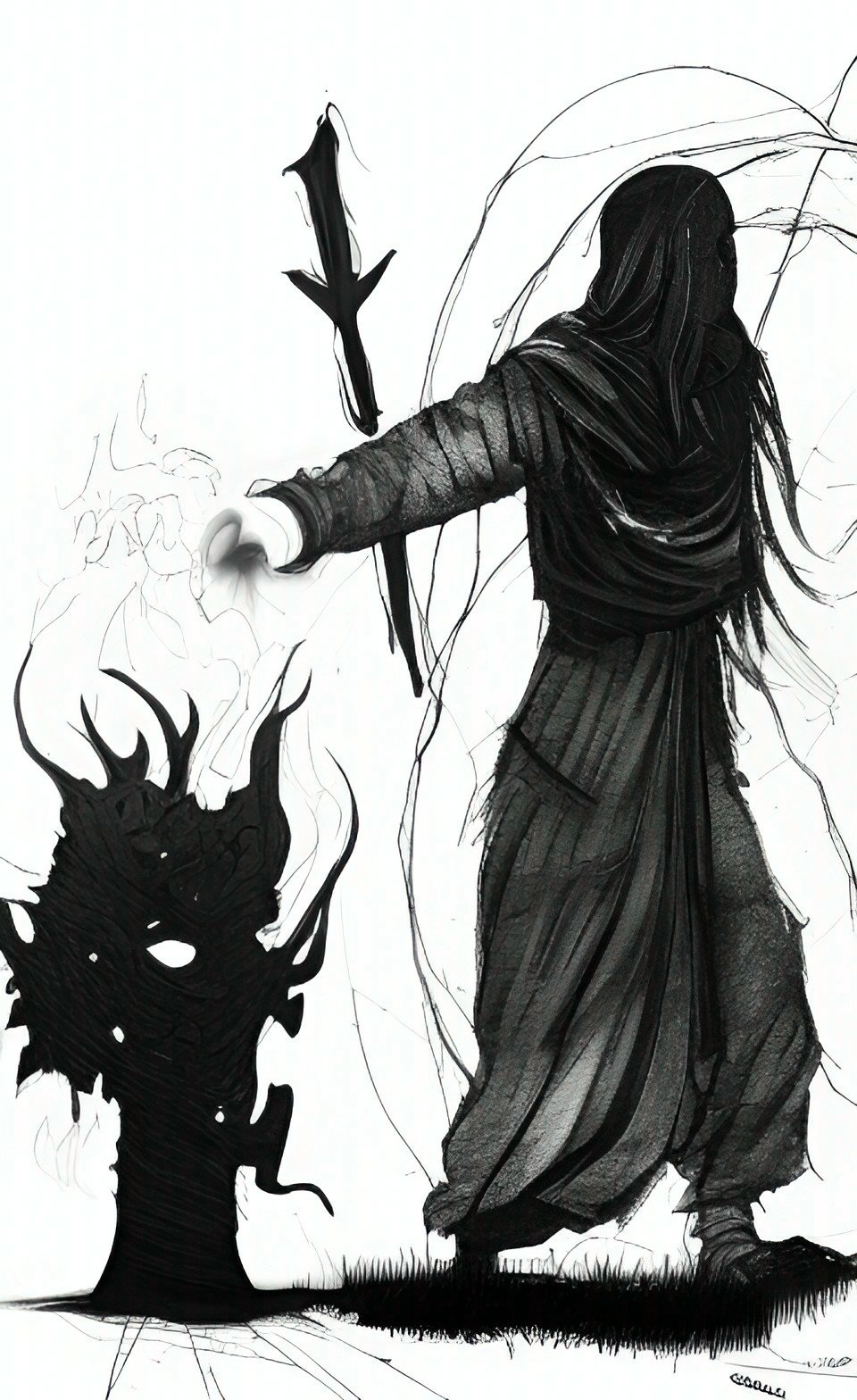 Remove Curse
Remove Curse
Tier: 5
Casting Time: 1 Round
Area of Effect: 1 person, spell, or object
Range: 1//
Duration: Permanent
Arcane Focus: A pair of scissors with blades made from black basalt
B-M-S Cost: 0.25 BMS per Tier of the original spell
Classification: Benedictions
The Arcane Focus for this spell is pair of scissors in which the cutting edges are made from black basalt. In the Gaianarian mythology black basalt is an anti-magical stone. If the Necromancer crafts the scissors himself (via some sort of crafting roll like Stone Craft), then the Necromancer gains a +1 bonus on all checks. Furthermore, if the scissors are aesthetically pleasing by virtue of the Necromancer having at least one rank in Artistic Ability when the device was crafted, then the Necromancer gains +2 on all related rolls. The focus is not consumed in the casting of this spell.
This spell allows the Necromancer to attempt to remove curses from persons, objects, places, etc. As with Dispel Magic, the chance of success is determined by matching the Necromancer's Willpower+Tier versus the original caster's Willpower+Tier on the Universal Matrix. For example, a Necromancer (Will 14, Tier 5 spell) may wish to break a Gunslinger's (Will 16, tier 2 spell) Mark of Law. The roll in this case would be 19 vs 18 on the Universal Matrix. Success indicates that the curse is removed while failure indicates that the curse remains.
Changes from the printed (book) version: This is a new spell.
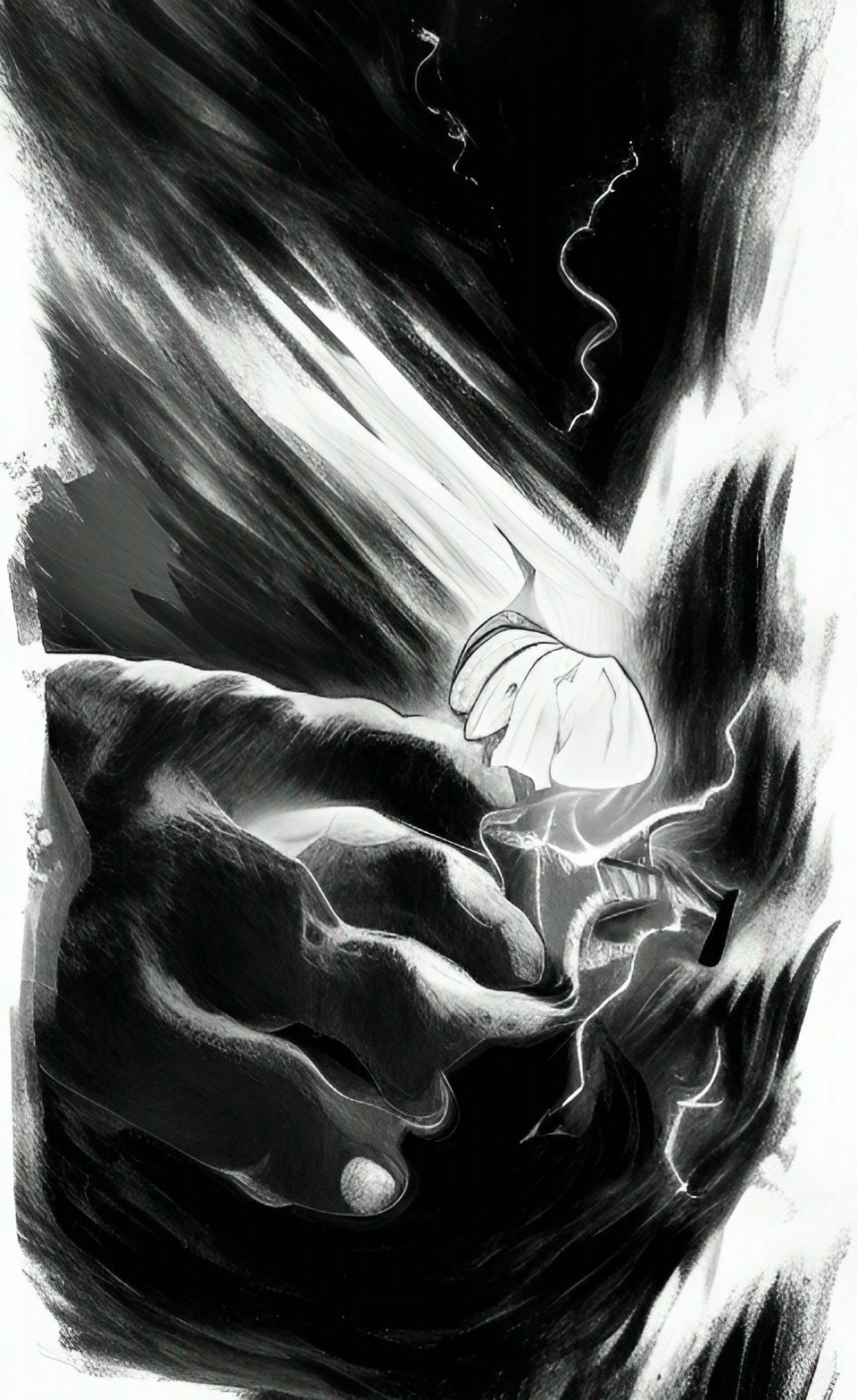 Soul Imprisonment
Soul Imprisonment
Tier: 5
Casting Time: Special (full spirit combat)
Area of Effect: 1 person
Range: 2// line of sight
Duration: Generally permanent, see below.
Arcane Focus: A lock or hair from the target; an expensive gem
B-M-S Cost: 1 per level or hit die of the target
Classification: Conversion (or possibly sleep/charm)
The Arcane Focus for this spell is a lock of hair from the target. Alternatively, the Necromancer can use fingernail clippings from the target, a vial of blood, or a vial of saliva. The focus (hair (or whatever) is expended in the casting of this spell whilst the gemstone is not.
The use of this spell is almost always an evil act. The spell forcibly pulls the mind and life-essence (soul) from a living being and transfers it to a flawless gem worth no less than 500 copper pieces. The effect is generally permanent. However, the mind/soul could theoretically be transferred into a Construct body (thus transforming an ordinary Construct into a Living Construct). Alternatively, the mind/soul could be transferred into a cloned body.
The target of this spell could willingly undergo this procedure. For instance, a professor who is dying of a terminal illness could have his soul transferred to a Construct body so that he may continue his quest for knowledge. A comatose patient's mind/soul could be transferred to a gemstone until such a time that a cloned body could be fashioned. In cases like this (a willing target or a non-resisting target) no formal spirit combat is required.
Against an unwilling target, the Necromancer must wear the target's Willpower down to zero in full, formal spirit combat. This procedure involves both combatants matching their Willpower on the Universal Matrix. Each round, the loser's Willpower is depleted by 1d4 points. If the target is brought to zero, he/she gets a final Save versus System Shock to avoid having his/her soul imprisoned in the gem. A success indicates that the target is merely rendered comatose for one day. A failure means that the target's soul is bound. If the Necromancer loses the spirit combat, the gemstone shatters and the Necromancer is rendered comatose for one day.
While a bound soul cannot take any direct action, it can still passively observe (since gems do indeed absorb both light and sound). Moreover, the soul can telepathically communicate with any living being that makes physical contact with the gem. Given a long enough period of captivity, a bound soul may eventually gain the ability to project a holographic representation of itself at a distance in order to communicate more effectively. Such projections are insubstantial and cannot actually touch anything solid. Most bound souls have subdued emotions due to the lack of a biochemistry.
Allied bound souls could lend BMS to the Necromancer. Since the gem is essentially alive (since it houses a soul), the entity still recovers BMS and spirit points at the usual rate. It should be noted that the Constitution, Strength, and Comeliness attributes are no longer calculated for bound soul BMS. Souls captured unwillingly would be unlikely to assist the Necromancer.
A Necromancer can reverse the process by force of will. Typically, the Necromancer places the soul into a Construct body or a cloned body. However, a particularly cruel Necromancer may place the soul into an Undead body (and thus upgrading an ordinary Undead monster into a sentient, free-willed Undead). If the gem is destroyed, the soul departs to whatever afterlife it would have ordinarily departed to after death.
Changes from the printed (book) version: The gemstone costs a lot more and the process of binding a soul is much more difficult.
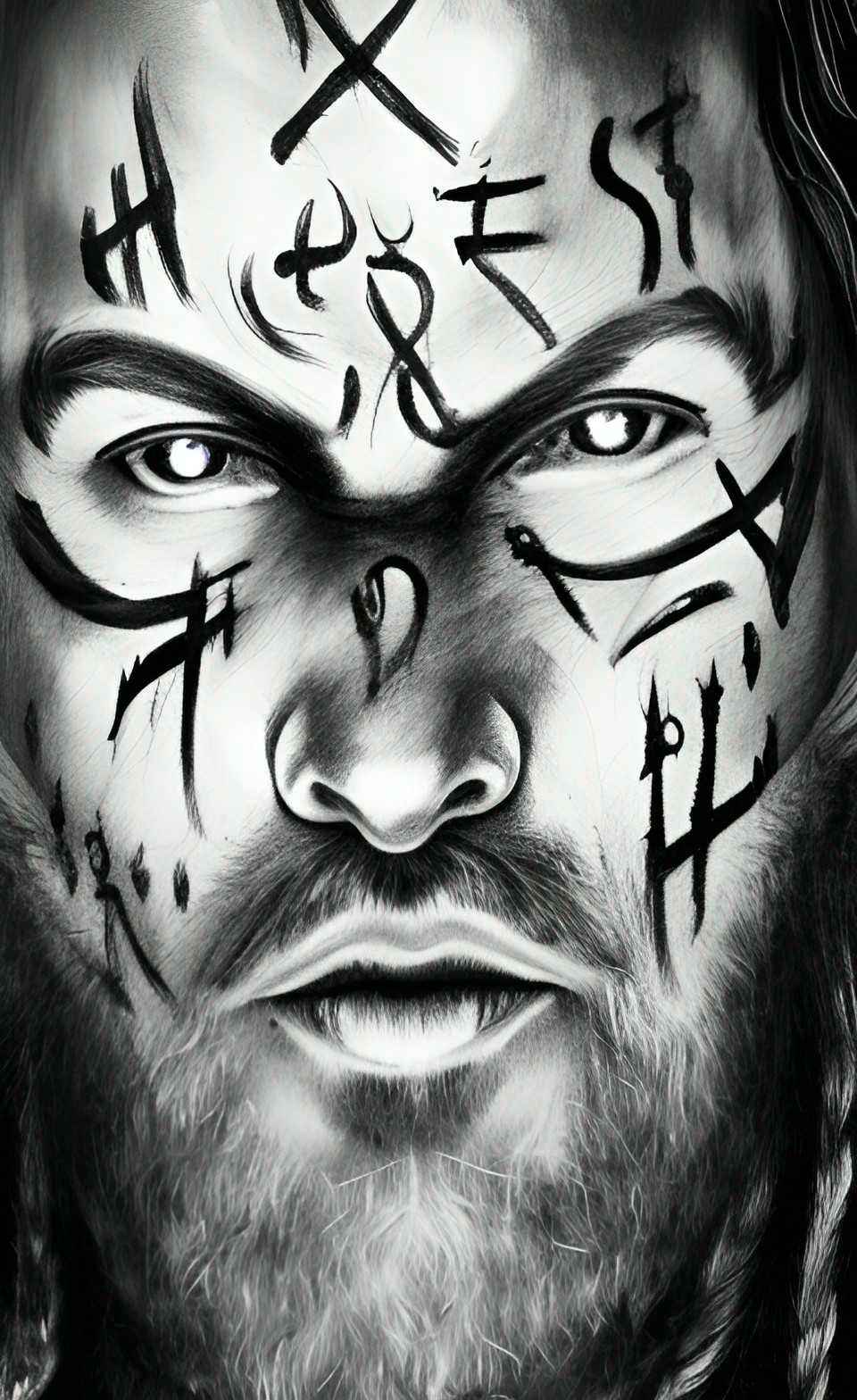 Spiritual Marker
Spiritual Marker
Tier: 5
Casting Time: 1 Round
Area of Effect: 1 person
Range: Touch
Duration: Until cancelled or dispelled
Arcane Focus: A drop of the Necromancer's blood
B-M-S Cost: 1.5 BMS
Classification: Benedictions
The Arcane Focus for this spell is a drop of the Necromancer's blood. As the blood is used to draw a symbol of protection upon the skin of one of his/her allies, the focus is necessarily expended in the casting of this spell.
This spell causes Undead to not attack the protected individuals. It does not grant invisibility to Undead, however. Additionally, protected individuals are immune to diseases, infection, and contagion that may be carried by Undead monsters.
With regard to protection from being attacked: an Undead monster will be free to attack the Necromancer (or ally) once that person lands a successful blow against the monster. However, the protection from Undead-transmitted infections remains.
It should be known that there exists a limit to how many people can receive this benefit.
- Levels 1 to 4: Up to five allies can be protected.
- Levels 5 to 9: Up to ten allies can be protected.
- Levels 10 to 14: Up to fifteen allies can be protected.
- Levels 15 to 19: Up to twenty allies can be protected.
- Levels 20 and higher: Up to twenty allies can be protected.
Once this limit is reached, the Necromancer can either undo the protection on the oldest marker or simply wipe the slate clean and remove all markers at once. The recipient of this spell will instantly know if the protection is removed because the blood symbol will disappear, and the recipient's skin will feel cold for a few rounds where the brand had been. Additionally, a Dispel Magic (or similar spell) can remove a Spirit Marker. Likewise, if the Necromancer dies, the protection will also terminate.
Changes from the printed (book) version: This spell has been repurposed as an Undead immunity spell.
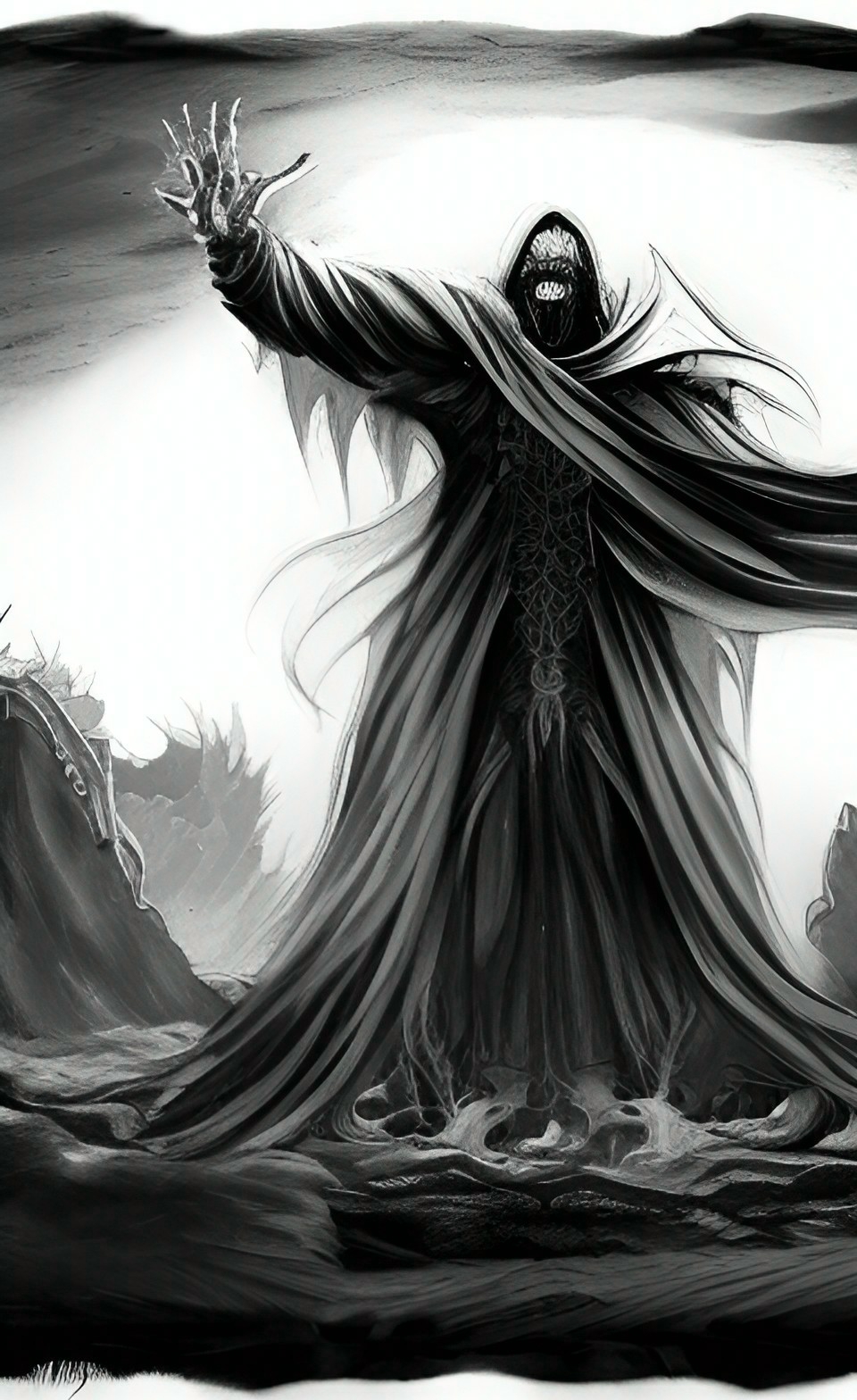 Summon Greater Undead
Summon Greater Undead
Tier: 5
Casting Time: 1 Round
Area of Effect: 1 monster
Range: 6// line of sight
Duration: 1 round per level
Arcane Focus: A jawbone from a skull
B-M-S Cost: 2.5 BMS
Classification: Summoning
The Arcane Focus for this spell is a jawbone from a skull of some kind. If the jawbone is derived from a humanoid skull, then the duration of the spell is doubled. If the jawbone comes from a humanoid skull derived from either an evil Priest or a sentient Undead, then the creature is able to inflict enhanced damage. The focus is not expended in the casting of this spell.
To cast this spell, the Necromancer aims the jawbone to the spot where he/she shall temporarily open a portal to the Plane of Shadow. As stated earlier, the Plane of Shadow lies in-between the Material Realm (including Gaianar) and the Conflagration. Denizens of the Plane of Shadow often include free-willed Undead, unquiet spirits, penitent souls who have not yet been redeemed, and evil clergy of various religions. This spell will bring one such entity through the portal and compel that being to fight on behalf of the Necromancer. As with most "summon a monster" spells, killing the summoned being ejects it from this plane of existence but does not actually slay the creature.
The possible outcomes for this spell are as follows:
| Creature Type (1d100) | Standard Focus | Enhanced Focus |
| Undead Monster (01-70) | 10 HD monster (GM chooses a type from the Creatures Guide or otherwise invents a monster). | 12 HD monster (GM chooses a type from the Creatures Guide or otherwise invents a monster). |
| Unquiet Spirit (71-85) | Incorporeal being with Will (14), empathy 35. | Incorporeal being with Will (16), empathy 40. |
| Penitent Soul (86-95) | Humanoid with randomly selected character class; Level 10. | Humanoid with randomly selected character class; Level 12. |
| Priest (96-00) | Random choice of clergy. Level 10. | Random choice clergy. Level 12. |
The spell can be terminated early by casting a Dispel Magic (or similar spell) on the open portal. Likewise, the Necromancer can close the portal early if desired. Likewise, the portal closes early if the Necromancer is slain.
Changes from the printed (book) version: This is a new spell.
Things to Consider
|
